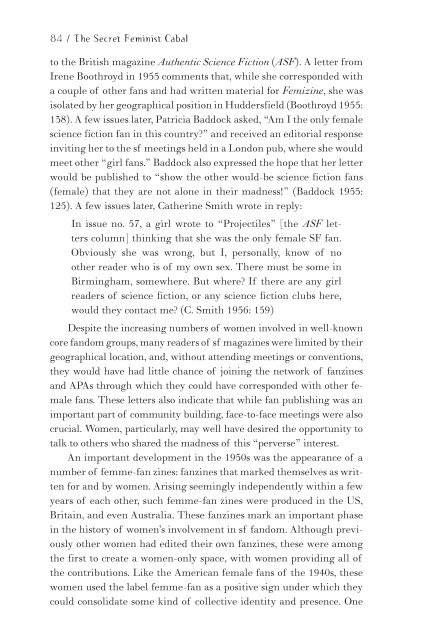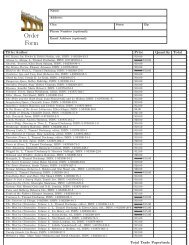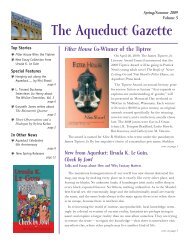Feminist Ca
Read Chapters Two and Three - Aqueduct Press
Read Chapters Two and Three - Aqueduct Press
- No tags were found...
You also want an ePaper? Increase the reach of your titles
YUMPU automatically turns print PDFs into web optimized ePapers that Google loves.
84 / The Secret <strong>Feminist</strong> <strong>Ca</strong>bal<br />
to the British magazine Authentic Science Fiction (ASF). A letter from<br />
Irene Boothroyd in 1955 comments that, while she corresponded with<br />
a couple of other fans and had written material for Femizine, she was<br />
isolated by her geographical position in Huddersfield (Boothroyd 1955:<br />
138). A few issues later, Patricia Baddock asked, “Am I the only female<br />
science fiction fan in this country?” and received an editorial response<br />
inviting her to the sf meetings held in a London pub, where she would<br />
meet other “girl fans.” Baddock also expressed the hope that her letter<br />
would be published to “show the other would-be science fiction fans<br />
(female) that they are not alone in their madness!” (Baddock 1955:<br />
125). A few issues later, <strong>Ca</strong>therine Smith wrote in reply:<br />
In issue no. 57, a girl wrote to “Projectiles” [the ASF letters<br />
column] thinking that she was the only female SF fan.<br />
Obviously she was wrong, but I, personally, know of no<br />
other reader who is of my own sex. There must be some in<br />
Birmingham, somewhere. But where? If there are any girl<br />
readers of science fiction, or any science fiction clubs here,<br />
would they contact me? (C. Smith 1956: 159)<br />
Despite the increasing numbers of women involved in well-known<br />
core fandom groups, many readers of sf magazines were limited by their<br />
geographical location, and, without attending meetings or conventions,<br />
they would have had little chance of joining the network of fanzines<br />
and APAs through which they could have corresponded with other female<br />
fans. These letters also indicate that while fan publishing was an<br />
important part of community building, face-to-face meetings were also<br />
crucial. Women, particularly, may well have desired the opportunity to<br />
talk to others who shared the madness of this “perverse” interest.<br />
An important development in the 1950s was the appearance of a<br />
number of femme-fan zines: fanzines that marked themselves as written<br />
for and by women. Arising seemingly independently within a few<br />
years of each other, such femme-fan zines were produced in the US,<br />
Britain, and even Australia. These fanzines mark an important phase<br />
in the history of women’s involvement in sf fandom. Although previously<br />
other women had edited their own fanzines, these were among<br />
the first to create a women-only space, with women providing all of<br />
the contributions. Like the American female fans of the 1940s, these<br />
women used the label femme-fan as a positive sign under which they<br />
could consolidate some kind of collective identity and presence. One




